Croton sylvaticus
Croton sylvaticus Hochst.
Family: Euphorbiaceae
Common names: forest fever-berry, woodland croton (Eng.); boskoorsbessie (Afr.), umFeze, uMagwaqane (Xhosa); umHloshazane, uGebeleweni, umZilanyoni, inDumbahlozi (Zulu); moema, moema-tswetsi (Northern Sotho); mula-thoho, muima-vanda (Venda)
SA Tree No: 330
Introduction
Croton sylvaticus is a beautiful, spreading, leafy tree, up to 21 m, high sometimes less, usually with a tall, straight trunk up to 1 m in diameter.
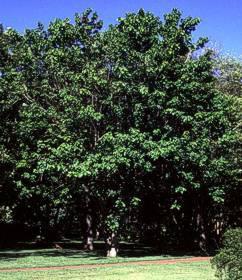
Description
Description
The bark on young trees is pale grey and smooth, becoming darker and rougher with age, frequently blotched with pink or grey lichen. Branches are smooth and grooved, twigs with prominent leaf scars, usually covered with short rust-coloured hairs. Leaves are dark green, alternate, borne on stalks up to 100 mm long, with 2 small, knob-like growths with glands where the stalk joins the leaf.
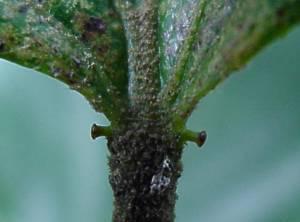
The leaves are usually egg-shaped, often widest towards the base, tapering to a long point with shortly toothed margins, 50-150 x 100 mm, with five distinct veins from the base, smooth above, and with a few star-shaped hairs below, particularly on the veins. Small stipules fall early.
The flowers are small, green, creamy, borne in spikes 60-210 mm long and consisting of many male flowers with only a few female flowers among them towards the base. Flowering time: September to January.
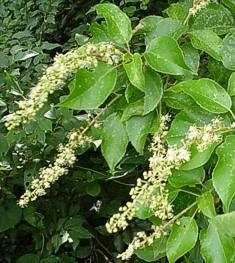
The fruits are roundish, soft salmon-orange, short-stalked, rough capsules 13 mm in diameter, covered with short hairs, usually with three roundish lobes.
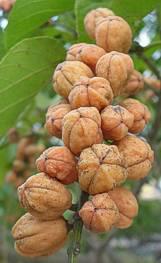
Conservation Status
Status
Currently the Red Data status of Croton sylvaticus is unknown.
Distribution and habitat
Distribution description
Croton sylvaticus grows in coastal and inland forests, in scrub, often along streams from Port St. Johns through KwaZulu-Natal, Swaziland and Mpumalanga to Limpopo.
Derivation of name and historical aspects
History
Croton is derived from the Greek word kroton, a tick, from the appearance of the seeds of these plants; sylvaticus means growing in woods, forest-loving (compare the apt common name, woodland croton).
The genus Croton consists of ± 800 tree or shrub species throughout the tropics, of which only 11 occur in southern Africa.
Ecology
Ecology
Croton sylvaticus fruits are poisonous, but are eaten by birds such as Forest Weavers, Cinnamon Doves, Green Pigeons and Hornbills. Red-eyed Turtle Doves are fond of fruits that have fallen to the ground. A well-known butterfly that breeds on members of the genus is the Green-veined Charaxes, Charaxes candiope.
Uses
Use
The wood of Croton sylvaticus is soft, very pale in colour, often with small dark streaks, and is easily worked. It burns like Ptaeroxylon obliquum (sneezewood) when it is green. It is noteworthy that the Venda name muima-vanda means 'stand in courtyard'. The Xhosa name, umFeze refers to the spittle-bug, an insect that often infests the tree.
Leaves are made into a poultice to treat pleurisy. The bark is used to treat rheumatism and in Gazaland is utilized as a fish poison. Finely ground bark is used for the treatment of intestinal disorders, for healing bleeding gums and as a purgative. Powdered bark is used by the Swazi for gallsickness in cattle.
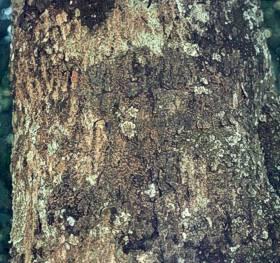
It is an attractive, fast-growing decorative shade tree for warmer gardens. Particularly beautiful when covered with bunches of bright orange fruits, the forest fever-berry can be evergreen under favourable conditions.
Growing Croton sylvaticus
Grow
Propagate this tree from seed, in trays filled with seedling soil or a mixture of river sand and sifted compost (1:1) and keep moist.

Acknowledgement: The author extends sincere thanks to colleagues who have rendered their invaluable assistance.
References
- Coates Palgrave, M. 2002. Keith Coates Palgrave Trees of southern Africa, edn 3. Struik, Cape Town.
- Joffe, P. 1993. The gardeners guide to South African plants. Tafelberg, Cape Town.
- Palmer, E. & Pitman, N. 1972. Trees of southern Africa, vol. 2. Balkema, Cape Town.
- Schmidt, E., L ö tter, M. & McCleland, W. 2002. Trees and shrubs of Mpumalanga and Kruger National Park. Jacana, Johannesburg.
- Stern, W.T. 1972. A gardener's dictionary of plant names. Cassel, London.
Credits
Alec Naidoo
Pretoria National Botanical Garden
August 2008
Plant Attributes:
Plant Type: Tree
SA Distribution: Eastern Cape, KwaZulu-Natal, Limpopo, Mpumalanga
Soil type: Sandy, Loam
Flowering season: Spring, Early Summer
PH: Acid, Neutral
Flower colour: Green, Cream
Aspect: Shade
Gardening skill: Average
Special Features:
Horticultural zones










Rate this article
Article well written and informative
Rate this plant
Is this an interesting plant?
Login to add your Comment
Back to topNot registered yet? Click here to register.